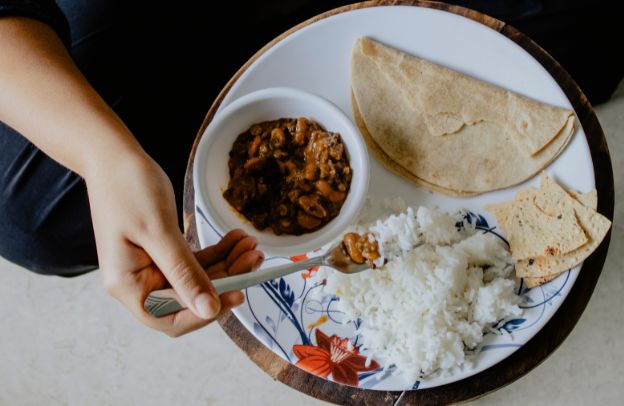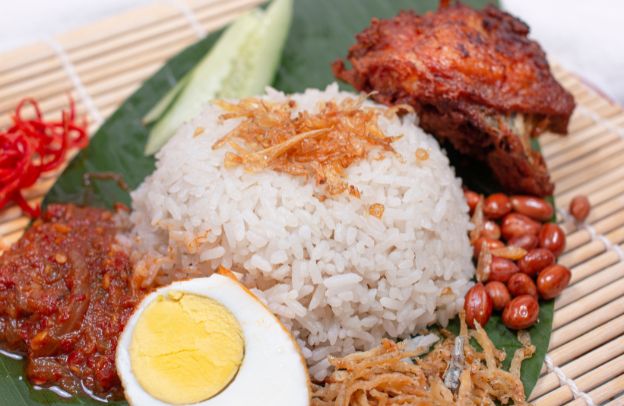Rice and Culture: Understanding the Role of Rice in Different Cuisines and the Opportunity for African Diaspora Agribusiness

Imagine stepping into a busy marketplace in Lagos, Accra, or Dakar and the air is filled with the sounds of conversations as buyers and sellers negotiate over sacks of golden rice grains. This scene plays out everyday in many parts of Africa, and it is no surprise why. Rice is more than just a staple food, but it has become a way of life, culture, and livelihood. Yet, beneath its importance as a source of nourishment lies a wealth of opportunities. especially for entrepreneurs within the global African diaspora.
Want to learn more about storytelling? Start by downloading the first chapter of The Storytelling Mastery.
If you are an entrepreneur looking to make a mark in agribusiness, rice is the perfect starting point. This seemingly simple grain holds immense potential, offering opportunities that extend far beyond its status as a staple food.
Rice is your gateway to making a global impact, fostering local connections, and creating opportunities for collaboration within the African diaspora and beyond.
By venturing into rice agribusiness, you’re not just investing in a product; you’re contributing to food security, supporting rural livelihoods, and building sustainable supply chains. Rice farming has the power to transform communities, create jobs, and elevate local economies. And with the global appetite for rice continuing to grow, there’s never been a better time to join this thriving industry.
Through collaboration and shared expertise, entrepreneurs within the diaspora can drive innovation and resilience, turning rice agribusiness into a force for positive change.
Rice Production and Use Cases
According to an article on ResearchGate titled “Rice: Importance for Global Nutrition,” rice is a dietary staple for more than half of the world’s population and is cultivated in over 100 countries, with Asia contributing 90% of global production.
While there are over 110,000 varieties of rice, differing in quality and nutritional value, the post-harvest process primarily classifies rice as either white or brown. The availability and consumption of rice are influenced by regional and cultural preferences, as well as the need for stable storage and transportation.
Rice is more than just a source of energy because it is packed with essential nutrients such as magnesium, phosphorus, manganese, selenium, iron, folic acid, thiamin, and niacin. However, it is low in fiber and fat.
Brown rice is often promoted as the healthier option due to its higher content of bioactive compounds, vitamins, and minerals, which are removed during the polishing process that produces white rice. Despite the nutritional benefits of brown rice, white rice remains more popular due to its ease of cooking, better taste, and longer shelf life.
White rice does have a higher glycemic load, which can affect blood sugar levels, but when consumed as part of a balanced meal with other nutrient-rich foods, it can be included in a healthy diet. With the global population projected to increase, rice will continue to be an essential food source.
This makes it crucial to promote the consumption of whole grains like brown rice and find ways to recover valuable phytonutrients lost during milling.
Addressing the challenges of climate change, shifting demographics, and evolving consumer preferences requires collaboration among farmers, food manufacturers, healthcare providers, and nutritionists. By working together, these stakeholders can help ensure a consistent, nutritious, and sustainable supply of rice to meet global demands.
Rice being the world’s most consumed staple food, provides over 20% of global caloric intake, but in Nigeria which is Africa’s top rice producer, it plays an even more critical role.
Despite producing about 8 million metric tons annually, the country still imports large quantities to meet demand is an opportunity for African diaspora entrepreneurs. Imagine being part of a movement that not only meets local consumption needs but exports to culturally aligned markets across the world.
See also Rice and the Future: The Role of Rice in Meeting the Food Needs of a Growing Population
Key Use Cases of Rice:
- Home-Cooked Staples: Rice is at the heart of countless traditional meals across Africa. From the festive and beloved Jollof Rice to hearty rice stews and porridge, it holds cultural significance and is an essential part of daily life.
- Global Food Chains and Culinary Trends: African cuisine is gaining global recognition, and dishes like Jollof Rice, Biryani, and fried rice are being embraced by food enthusiasts worldwide.
- Processed Rice-Based Products: As more consumers seek healthier and gluten-free food options, rice-based products such as rice flour, rice noodles, and rice snacks are becoming increasingly popular.
Rice in Asian Cuisine
Think of Asia, and you’re instantly transported to a world of vibrant flavors and culinary artistry—steaming bowls of sushi rice, fragrant biryanis rich with spices, and sizzling plates of savory fried rice.
This continent, responsible for consuming nearly 90% of the world’s rice, has elevated this humble grain into a symbol of culture, history, and community. Every grain tells a story, and every dish is a connection to generations of tradition.
Here’s the takeaway: Asians have mastered the art of storytelling through rice. It’s not just food; it’s a legacy woven into daily life, celebrations, and identity.
For you, the African diaspora entrepreneur, entering the Asian market means more than providing a product—it’s about crafting a story. To truly resonate, your rice must embody the values of quality and authenticity.
Consider growing specialty varieties like aromatic basmati for biryanis or premium sushi-grade rice. By honoring their preferences and culinary heritage, your brand can become a trusted name synonymous with excellence and tradition.
Imagine the power of your rice not just as a commodity, but as a bridge—uniting continents, preserving culture, and creating an enduring legacy of its own.
Rice in African Cuisine
In Africa, rice is more than sustenance; it is a cultural cornerstone, a bridge connecting people, traditions, and identities. Take the famed Jollof Rice wars of West Africa, for instance.
What began as playful social media banter gʻ4 into a powerful celebration of heritage, with each nation passionately championing its unique spin on the dish. This matters so much because food isn’t just about nourishment, but it is a reflection of identity, pride, and unity.
For you, as a diaspora entrepreneur, understanding and embracing these cultural nuances is an advantage and a superpower. Every grain of rice carries a story, the joy of a festive gathering, the comfort of a family dinner, or the nostalgia of home. These are the stories that resonate with consumers, bridging continents and creating emotional connections.
Leverage these narratives to elevate your brand. Showcase the origins of your rice, celebrate the cultural significance of your products, and remind your audience of the shared experiences that unite us. Share tales of community, joy, and belonging stories that remind customers of home, even from miles away.
This approach isn’t just marketing; it’s trust-building. It’s a strategy that transforms your brand from a mere supplier into a cultural ambassador, winning hearts and loyalty with every grain you deliver.
Rice in Latin American Cuisine
Now, picture a vibrant table in Latin America, a steaming paella adorned with fresh seafood, infused with saffron, and brimming with bold spices. Or imagine arroz con pollo, a comforting dish that brings families together every Sunday.
In Latin America, rice isn’t just an ingredient; it’s a cultural cornerstone. It symbolizes warmth, connection, and the shared moments that form the fabric of community life.
As an entrepreneur, this is your opportunity to go beyond food export and engage in a cultural dialogue. By offering a superior product, you’re not just filling plates—you’re aligning with cherished traditions and values.
Latin American consumers value authenticity, quality, and the stories behind their food. This is your chance to show how your rice isn’t just grown but crafted with care, blending seamlessly with their beloved dishes.
Imagine positioning your brand as a bridge between continents, a partner in preserving traditions while enhancing them. Highlight how your rice complements the bold flavors of their cuisine, how its quality enhances the sensory experience, and how its origins connect with the shared global narrative of food as a unifier.
By embracing this cultural exchange, you don’t just sell rice, but you become part of family meals, celebratory feasts, and the everyday joys that make life rich. This connection builds loyalty, trust, and a lasting presence in a region where rice is more than sustenance, but a symbol of togetherness.
Challenges Facing Rice Farmers in Nigeria
But let’s be real; it is not all smooth sailing. Nigerian rice farmers face significant challenges that hinder their potential. From inadequate infrastructure and limited access to quality inputs to the looming threats of climate change, the lack of modern farming tools, and the difficulties in accessing credit, these obstacles stifle growth and limit productivity. Yet, where challenges exist, so do opportunities for innovative solutions.
This is where the power of diaspora collaboration comes into play. Imagine the impact of working hand-in-hand with agricultural innovators—introducing cutting-edge technology, distributing high-yield, climate-resilient seeds, and providing farmers with the financial resources they desperately need. Such partnerships don’t just address immediate needs; they set the foundation for long-term transformation.
Pooling the expertise, networks, and resources within the African diaspora isn’t just beneficial—it’s revolutionary. It’s about creating a ripple effect that starts on the farm and spreads through communities.
Empowering farmers enables them to increase yields, improve their livelihoods, and contribute to the local economy. In turn, this boosts the availability of better-quality rice for both domestic markets and export, strengthening Nigeria’s position in the global rice industry.
By leveraging the collective power of the diaspora, we’re not just solving problems—we’re rewriting the narrative. Together, we can transform challenges into opportunities, empower farmers to thrive, and position Nigerian rice as a symbol of excellence and resilience on the world stage. This isn’t just collaboration; it’s a movement for lasting change.
Leveraging Storytelling for Agribusiness Success
Consumers don’t just buy food; they buy stories. People crave authenticity, and when you, as a brand, share your journey of your family’s rice traditions or the challenges faced in bringing grain from seed to plate, it touches hearts.
What You Can Do:
In today’s global market, selling a product is about more than quality, it is about creating an emotional connection. For a rice brand, storytelling becomes your most valuable tool. Here’s how to take your branding to the next level:
- Emotional Branding
Share the heartwarming stories of your farmers—their heritage, family traditions, and the time-honored methods they use to cultivate rice. Let your audience see the faces behind the grain, feel the passion in their work, and understand the journey from field to table. When customers see the humanity behind the product, it fosters trust and loyalty. - Cultural Tailoring
Speak the language of your audience. Whether you’re reaching African households, Asian kitchens, or Latin American dining tables, weave narratives that resonate with their traditions and values. Highlight how your rice fits seamlessly into their culinary heritage—whether it’s the vibrant Jollof Rice of West Africa, the savory biryanis of Asia, or the comforting arroz con pollo of Latin America. - Authentic Content
Showcase your rice as more than just a meal—it’s part of life’s cherished memories. Use relatable, authentic content to depict how your product can enhance family gatherings, celebrations, and cultural milestones. Feature diverse recipes and the stories behind them, inviting your audience to see their own lives reflected in your brand.
By combining emotional storytelling, cultural resonance, and authentic narratives, your rice brand can become a symbol of connection, community, and shared experiences across the globe.
Success Strategies for Small and Medium-Scale Farmers
The thing here is that success in agribusiness doesn’t happen overnight. It requires a mindset of continuous learning and growth. In today’s competitive and dynamic market, staying ahead means taking proactive steps to innovate and improve. As an entrepreneur, here’s how you can set yourself apart:
- Seek Out Training Programs
Knowledge is power. Enroll in agribusiness courses that teach modern farming techniques, supply chain optimization, and marketing strategies. Platforms like AClasses Media offer specialized resources tailored for entrepreneurs looking to excel in this space. From soil health management to branding your products, the right training can elevate your business. - Network and Collaborate
Don’t go it alone. Build relationships with peers in the diaspora and at home. Join industry forums, attend agribusiness expos, and participate in mentorship programs. Sharing knowledge, exchanging best practices, and pooling resources can unlock opportunities you might never find on your own. Together, we can build a powerful community that drives change. - Embrace Innovation
Technology is revolutionizing agriculture. Explore tech-driven tools such as precision farming techniques, drone technology for monitoring fields, and automated irrigation systems. These innovations not only improve yield but also promote sustainability, ensuring your operations are environmentally and economically viable.
Success in modern agribusiness is a journey of innovation, collaboration, and adaptability. By committing to growth and leveraging the right tools and networks, you can transform challenges into stepping stones and create a thriving business that resonates globally.
See also Best Marketing Strategies for Small and Medium-Scale Farmers in African Agribusiness
Case Studies and Success Stories
The stories of small-scale Nigerian rice farmers who embraced change are inspiring. Some started with modest means, using storytelling and innovative marketing to capture local and international markets.
These stories aren’t just uplifting; they’re proof that collaboration within our diaspora works. Imagine being part of this narrative.
Conclusion
Rice is more than a crop. It is a story of unity, culture, and opportunity. For you, it is an entry point to global impact and local connection. Let’s make this more than a transaction; let’s make it a movement, a collaborative effort to elevate agribusiness through partnership, storytelling, and continuous learning.
See this too: The Business Side of Creativity: Essential Tools and Strategies for Creative Entrepreneurs
Call to Action:
Are you ready to join? Reach out, learn more, and become part of a collaborative effort that builds stronger businesses and global connections, together.
Want to learn more about storytelling? Start by downloading the first chapter of The Storytelling Mastery.






